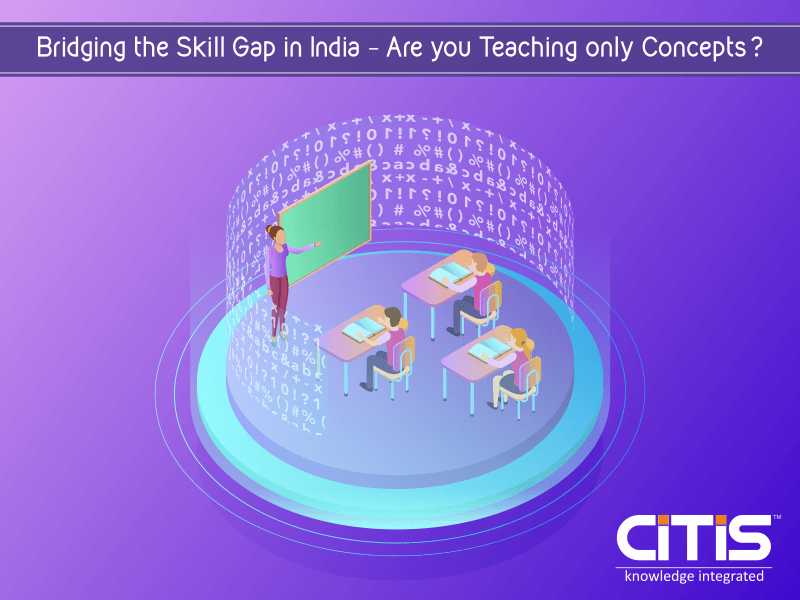Today, with technology applications transforming into an integral part of every workplace, one of the major confrontations of business owners lies in the fact that fresh candidates are seldom trained on the latest technologies, and have to be trained on apparently everything, once recruited. In-house training, no matter how much ever beneficial and accurate it may be, incurs a lot of time, and demands a considerable financial as well as resource investment. While it could be viable for a multinational enterprise to align candidates with their requirements, for startups, maintaining an exclusive training infrastructure may attract an excess investment. Looking at this situation, the need for integrating technology with the conventional courses is what I attempt to emphasize through this blog.
Someone has to Step Out in the Sun!
A decade ago, it was still possible for people to escape technology and remain a parasite on the conventional techniques. However, today, there is no escape! The situation is, either you shape in, or you will be shipped out. Working professionals, at least owing to the fear of losing the job, seem to be shaping to the modern requirements; however, this concern has not completely dripped in the academic space yet. Even today, educators are either reluctant to change and graduate themselves to technology, or else, do not have the bandwidth to develop in-house skills to integrate technology into the existing course content.
Obviously, we cannot just watch the sunset and do nothing to light up the room. If not the already tied-up colleges, private educators need to come up with technology courses focusing on augmenting the professional skills of the students, and making them industry-ready. It is an ambitious step though! These educators attempt to bridge the skill gap created on account of ignoring or not including the in-trend technologies in the course curriculum. Let us look at some courses that aim at upgrading students to the international industry standards.
Training Programs Advised to fill in Skill Gap
Of course, if the industry demands, as an educator, you must have it. Educators need to graduate themselves to the required skill sets, the required technical expertise, and understand the thought process behind the inception of a particular technology. This process, at the outset, requires teachers to be aligned with the real-world expectations. Further, it is necessary for the stalwarts or the bigger players in the business to endorse and certify the industrial utility of the course. This will guarantee the learners a relevant job in the industry, and offer value for the money paid. All in all, as an educator, you need to build the trust amongst students for them to be felt in safe hands, while they learn from you. Here is an overview of the courses that need to be included in the regular curriculum.



